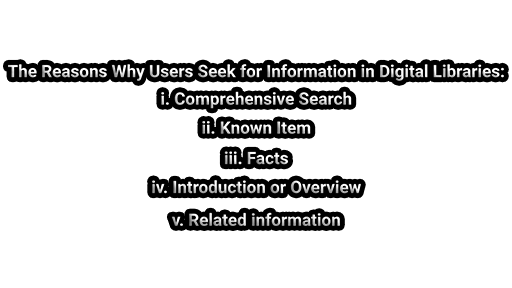Information Discovery:
A core service provided by digital libraries is to help users find information. Information discovery begins with a discussion of catalogs, indexes, and other summary information used to describe objects in a digital library; the general name for this topic is descriptive metadata. Browsing is the general term for the unstructured exploration of a body of information; it is a popular and effective method for discovering the unexpected. Most traditional libraries arrange their collections by subject classification to help to browse. Classification schemes, such as the Dewey Decimal Classification or the Library of Congress classification, provide both subject information and a hierarchical structure that can be used to organize collections. The most widely used web information service, Yahoo, is fundamentally a classification of web resources, augmented by searching. Digital libraries with their hyperlinks lend themselves to strategies that combine searching and browsing. In the rest of this article, we are going to discuss the reasons why users seek for information in digital libraries.
The Reasons Why Users Seek for Information in Digital Libraries:
Here are some of the reasons why users seek for information in digital libraries. The range of these needs illustrates why information discovery is such a complex topic, and why no one approach satisfies all users or fits all materials.
- Comprehensive Search: The objective of a comprehensive search is to find everything on a specified topic. Serious scholarly, scientific, or legal study typically begins with a comprehensive search to discover the prior work in the field.
- Known Item: Known item searches occur when the user is looking for a specific item, such as, “Find me the opening chapter of Moby Dick.” Frequently the reference is not perfect and a search is needed to find the item, but there is a specific item and the user will recognize it when it is found.
- Facts: Facts are specific items of information that may be found in many sources of information. “What is the capital of Barbados?” “What is the atomic weight of mercury?” When seeking for a fact, the search is complete when the fact is found. The source of the fact must be reliable, but there may be many possible sources.
- Introduction or Overview: General information on a topic is a common need. “How do I organize a wedding?” “What is public key encryption?” With such requests, there may be many suitable sources of information. The user wants a small selection.
- Related information: Once one useful item has been found, a user may wish to know about related items. In research, a common question is, “Is there any later research that builds on the work reported in this article?”
Reference:
- Digital Libraries written by William Y. Arms.

Library Lecturer at Nurul Amin Degree College










